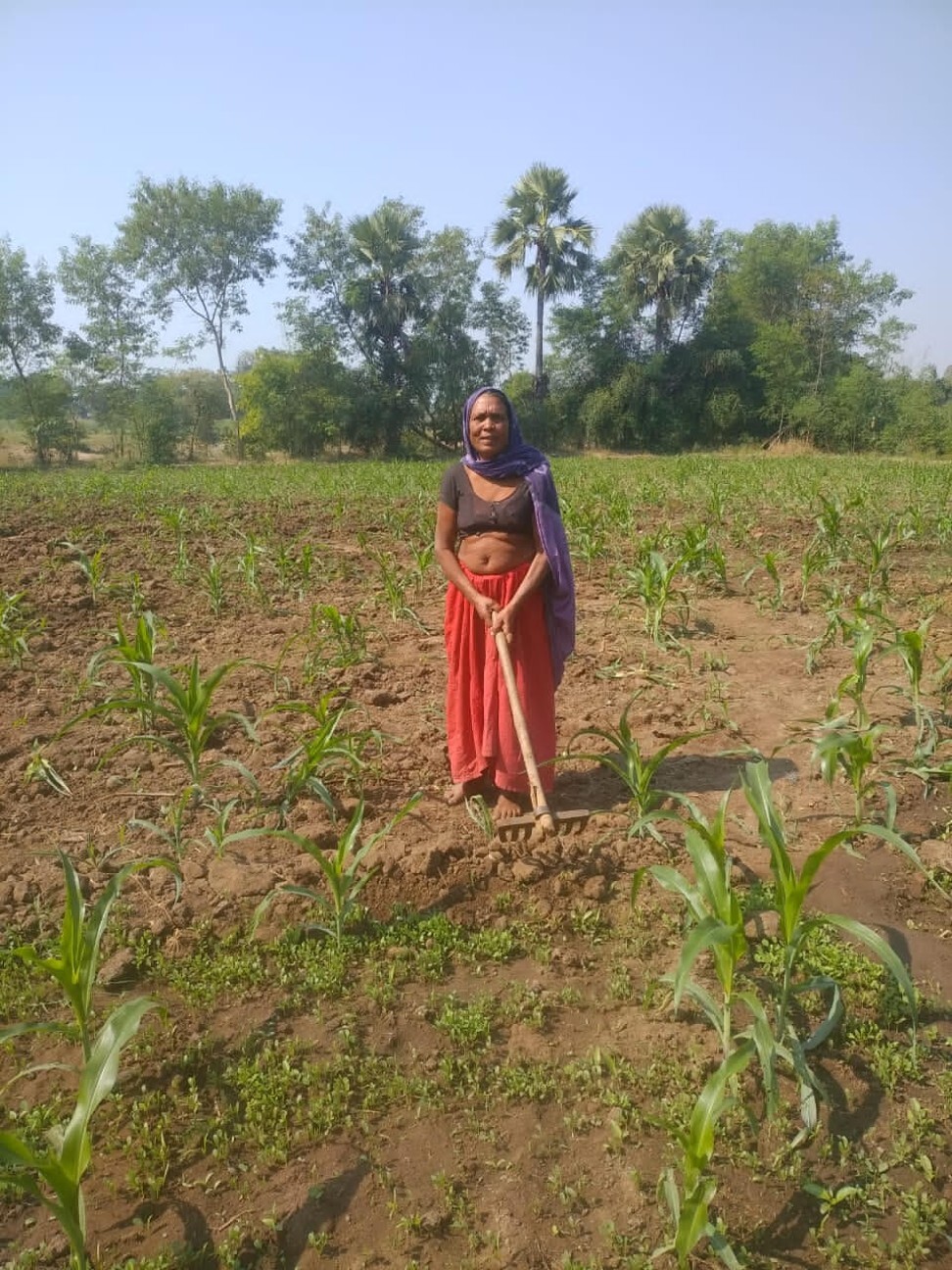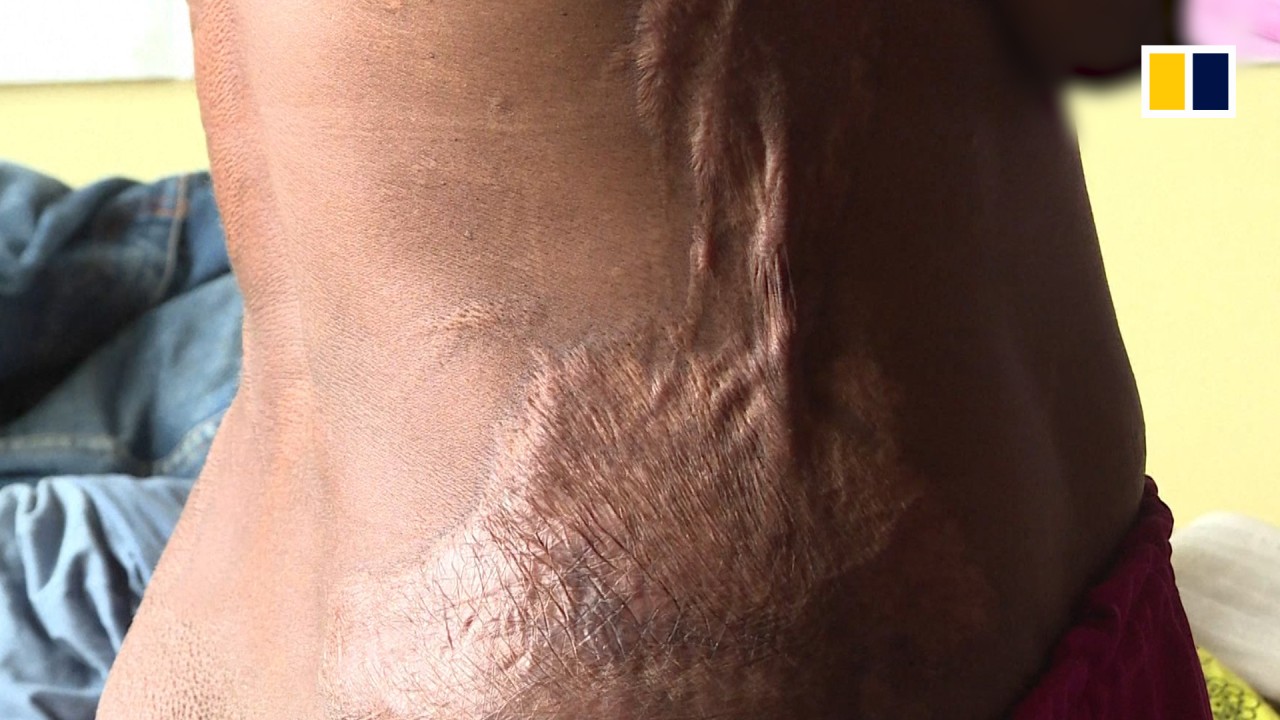
Unexplained deaths: how poor healthcare is fuelling Indian witch-hunts
- Sudden unexplained mortalities – together with a lack of health care, education and legal protection – are proving a dangerous mix in India’s rural areas
- Those accused of witchcraft tend to meet a grisly end

Shakriben works her farm every day, starting at 3am. The 60-year-old stands a touch over 1.62m, and weighs just 38kg – 10kg underweight – and her skeletal arms struggle to control a scythe.
On November 2, 10 people assaulted Shakriben, believing her to be a witch. They accused her of eating her mother-in-law’s essence.
A widow, Shakriben lives with her two unmarried daughters and her son, Dineshbhai. On the day of the attack, they had all woken before the sun, drunk some water and eaten a meagre meal of dry roti and chai. The mother and son then stepped out of their house in the village of Khilodi, in the Panchmaal district of India’s eastern Gujarat state, to water their crops of maize.
That morning, the family was tense.

IT STARTS WITH AN ILLNESS
Two weeks earlier, Shakriben’s mother-in-law had fallen ill, and died within days. An immediate cremation meant the cause of her death could not be known. Shakriben didn’t attend the funeral.
Twelve days later, her eldest brother-in-law, Babubhai, called a faith healer, known as a badva, to ascertain the cause of his mother’s demise. The man, from a neighbouring village, blamed Shakriben. “She’s a witch. She consumed her mother-in-law’s life using black magic,” he said.
Shakriben’s three brothers-in-law, nephew, and six women marched on to her property with lit torches, armed with sticks and heavy stones.
“We tried to run into the house,” she recalled. But the mob swiftly surrounded the widow and her son.
Shakriben’s three brothers-in-law and nephew – Babubhai, Bharatbhai, Rangitbhai and Mukeshbhai – began pelting her with the stones and hitting her with sticks made of thick wood, known as lathis.
All the while they shouted: “You are a daakan [witch], and ate our mother Batliben, and you are making us sick!”
Dineshbhai tried to protect his mother but was overpowered. The mob beat them until blood spurted from the young man’s head. A stone hit him in the right eye, rupturing it. The attack lasted nearly an hour and could have been fatal, had it not been for Shakriben’s daughters, who called the police and the helpline of a local NGO.
Dineshbhai has been in Baroda hospital ever since, first undergoing surgery on his skull and then his eye.

WITCH-HUNTING ON THE RISE
Between March and October, at least 11 people accused of being witches were either murdered, tortured, or both. On July 9, in the eastern state of Jharkhand, a man beheaded a woman and walked with her head into a police station. On October 14, an 80-year-old man was buried alive in Meghalaya in the northeast.
In each case, the victim was accused of making a neighbour or a family member sick by using black magic.
Shakriben escaped, badly injured, but alive. She is among the lucky few. Between 2000 and 2016 there were 2,500 recorded deaths related to witch-hunts, according to India’s National Crimes Record Bureau (NCRB). In 2016 alone, 523 women were lynched and 134 murdered because of witchcraft accusations.
“The actual figures could be three or four times the official numbers,” said Sanal Edamaruku, an anti-superstition activist and president of India’s Rationalist Society. His estimate is based on “information from local groups and what we [activists] see on the ground. Many of these cases are reported as other things – rape, homicide, et cetera”.
Those accused of witchcraft tend to meet a grisly end. Often, their faces are blackened and they are made to ride through the village on a donkey while people pelt them with stones and sticks. Some are forced to eat human excrement, and burned alive inside their homes.
The rituals involved in the killings have remained unchanged for decades.

02:04
India’s Durga Puja festival kicks off amid coronavirus restrictions
POOR HEALTH BREEDS SUPERSTITION
While ignorance and superstition are part of the explanation for the killings, they are not the only factors behind them.
Sanal said the lack of health care and increasing inequality across the country were equally important.
In poor rural areas without health facilities, deaths like that of Shakriben’s mother-in-law often go unexplained by medical doctors, prompting people to go in search of unlicensed faith healers for explanations.
A sudden rise in mortalities – such as from Covid-19 – exacerbates the problem, further feeding the fears and suspicions of a largely uneducated population.
This is borne out by statistics that show states with the highest number of superstition-related crimes tend to spend the least on health care.
In 2018, Jharkhand had the most such crimes in India, despite having implemented an anti-witch-hunting law in 2001. Between 2014 and 2018, 173 people in the state were killed after being accused of practising magic – about 28 per cent of such crimes nationwide during that period.
At the same time, Jharkhand’s health care expenditure is one of the lowest in India. The state spends 4.82 per cent of its budget on health care compared to 7.4 per cent in Meghalaya. In other countries belonging to the Organisation for Economic Cooperation and Development (OECD), the average is 8.8 per cent.
Jharkhand also has one of the lowest doctor-to-patient ratios in India – 1: 18,518, compared with the national average of 1: 11,082. The only place with a worse ratio is Bihar, where 122 sorcery-related murders took place between 1999 and 2015.
Gujarat, another hotspot for witch-hunting, has one of the lowest expenditure ratios in India. It spends 1,189 rupees on each citizen in a budget year, compared with 5,852 rupees, 5,177 rupees and 5,126 rupees in Mizoram, Arunachal Pradesh and Sikkim.
Shakriben’s village had been without a medical centre until very recently, pointed out Neeta Hardikar, a senior coordinator at Anandi-India, an NGO that works to empower women in Gujarat and Madhya Pradesh and runs the hotline Shakriben’s daughters called following the attack.
“With coronavirus, for example, people either live in denial saying there is no such disease, or know they are sick but refuse to go to a local health care practitioner, afraid they will be branded Covid-19 positive and taken away to a government facility,” Neeta explained.

01:58
As cases top 7 million, India poised to overtake the US with world’s highest coronavirus caseload
INSIDIOUS MOTIVES
However, while accusations of sorcery often follow unexplained illness or disease, experts say the killer’s real motive is often money.
“Police prefer to say these are faith-based crimes. But it’s been our work to show that these are calculated moves to dispossess vulnerable people such as elderly women, single women and elderly men of their land,” said Sejal Dand, founder of Anandi-India.
Shakriben – the farmer who was assaulted on November 12 – had an acrimonious relationship with Babhubai, her brother in law, for years before the attack. After her husband’s death, Shakriben had registered her daughters as heirs to her land, angering Babubhai, who opposed women owning property.
Witch-hunting crimes are usually perpetrated by members of the victims’ families or motivated by personal grudges, sometimes due to unrequited sexual advances, according to a 2015 study by the think-tank Partners for Law in Development.
“Our society’s ignorance is used by a lot of people conveniently for them. Commercial interests such as land grabbing are definitely a factor in these cases,” Sanal said.
PROBLEMS WITH THE LAW
The lack of a nationwide law – as well as enduring patriarchal attitudes – means victims often struggle for justice.
Shakriben was able to file a complaint with the local police at Dama Vav station, 2km from where the mob attacked her. She was accompanied by two activists from Anandi-India, Seemaben and Ruksanaben.
At first police refused to register the facts accurately, saying it was a “family matter” and that they would “catch them and take care of them”, Seemaben recalled.
The three women pushed for the complaint to include the accusations of witchcraft and grievous assault on the widow and son.

01:47
Witch-hunts spread terror in Papua New Guinea highlands
The registration of a complaint and inclusion of accusations of witch-hunting were “a big step forward because often police do not encourage complaints in such cases”, said Neeta Dandekar, a senior coordinator for Gujarat and Madhya Pradesh at Anandi-India.
When cases are registered it is common for them to be referred to as assault or murder but with no mention of the witchcraft accusations that led to the fatalities.
Sanal said part of the problem was that witchcraft was seen by some as related to the Hindu faith, with mentions of magical potions and acts in Vedic texts.
“When there are crimes connected with belief systems, the reporting very deliberately tries to omit that so as not to make the government look bad,” Sanal said.
Since Shakriben’s police complaint, the four men accused of attacking her have been granted bail and are free to roam her village. They have even paid her a visit, threatening her life.
“They said if we are going to go to jail for one complaint, then we might as well go in for a murder as well. Take back your complaint, or else,” she said.
Shakriben’s neighbours, who were too afraid to come to her aid at the time of the attack, ignore her. “No one from the village has come to see her, or asked her about Dineshbhai who is still in hospital,” Seemaben said.
These are the psychological and emotional tolls on people accused of witchcraft that the law cannot address, said Seemaben.
Ostracised by her community and with nowhere to turn for help, Shakriben stands tall, unbroken by her ordeal and ready for a new day. “I will fight. I will prove I’m no witch.”